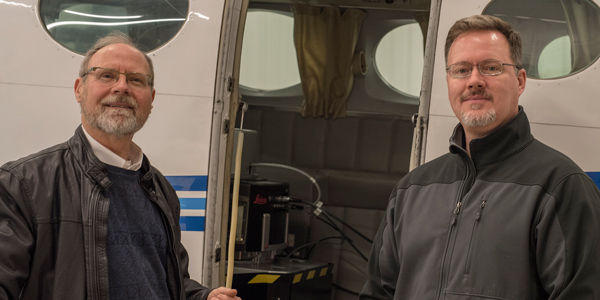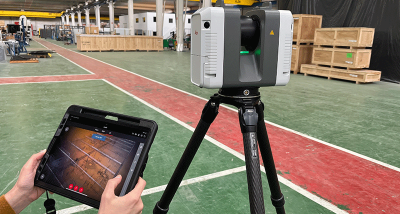Highlights:
- The company is the first in North America to receive the Leica camera
- The DMC III captures a frame of 25,728 pixels
- Aerodata says the camera gives them more collection ability than any other single plane in North America
Leica Geosystems Inc. today announced that Aerodata Inc., based in Ann Arbor, MI, is the first company in North America to take delivery of the Leica DMC III airborne digital camera. The Leica DMC III adds cutting-edge digital imagery capture capabilities to the company’s well established film photogrammetry service, enabling Aerodata to increase the level of support it provides to existing clients while also expanding into new markets.
Aerodata specializes in providing high-quality photogrammetric aerial surveys and oblique angle aerial photography for a broad range of clients, from private photogrammetric firms to national government agencies. For the last seven years, the company has exceeded clients’ expectations with its Cessna 210 and Cessna 340 aircraft and a Leica RC30 film camera. When owners Ken Mickey and John Sullivan decided to transition into digital imagery capture, they set high standards for their technology investment. “Quality, innovation, and a track record of outstanding service were key criteria for us,” said Mickey. “Leica Geosystems has a reputation for extremely high quality, and every interaction we’ve had with them has been at a very high level of professionalism. With that legacy, combined with the top-of-the-line capabilities of the Leica DMC III camera, we were confident in our decision to move forward.”
The Leica DMC III airborne mapping solution combines the world’s largest single frame camera with the most efficient workflow. Based on a new CMOS sensor engineered for airborne applications, the Leica DMC III airborne camera captures 25,728 pixels across swath—the world’s largest swath generated by a single frame—with unsurpassed image quality and almost zero blooming. An embedded flight management and GNSS/IMU system provides valuable metadata on every flight. Additionally, the integrated workflow software HxMap, which is part of the DMC III system, provides a highly productive processing environment with capabilities such as atmospheric correction, haze removal and block wide color balance, which help ensure high radiometric image quality.
“In addition to providing outstanding imagery, we can save our clients time by giving them additional data that streamlines their workflows,” said Sullivan. “In a single cycle, we now have more collection capability than any other single airplane in North America that flies at a similar speed because of the Leica DMC III camera in our airplane.”
To further expand its airborne imaging capabilities, Aerodata has invested in a Cessna 414 aircraft. Both the Cessna 414 and Cessna 340 are capable of flying either the RC30 or the DMC III camera, while the Cessna 210 will be used for aerial oblique imagery.
The new digital capability makes Aerodata an attractive partner for photogrammetry firms and other businesses faced with short turnaround times, stringent quality standards and high accuracy requirements for aerial imagery. The company also plans to expand into applications that require infrared imagery.
“Aerodata’s investment in the Leica DMC III gives the firm a solid foundation for growth in digital aerial photogrammetry,” said Jean Gardiner, vice president of the geospatial solutions division in North America for Hexagon Geosystems. “We are thrilled to be able to support Aerodata as the company transitions into this new phase of its business.”








